Understanding how to read an electric motor nameplate is crucial for technicians working with various electric motors. An electric motor nameplate is a vital tool that provides essential information about the motor’s construction, performance characteristics, and operational limits. This data is critical for selecting the right motor for a specific application, ensuring efficiency, and prolonging the motor’s lifespan. Proper interpretation of the nameplate is vital for correct installation, wiring connections, and matching a variable speed drive. In this guide, we’ll cover the essential information found on motor nameplates and explain how it affects maintenance and repair work, with a focus on common motor types.
Where is the Motor Nameplate Located?
An electric motor nameplate is a metal or plastic plate attached to the motor housing, providing critical information about the motor’s specifications and operational limits. The nameplate rating indicates the maximum load a motor can safely operate at for a specified duration, which is crucial for understanding motor duty classification and ensuring safe operation. This data is essential for technicians to ensure that electric motors operate efficiently and reliably. Nameplates are typically located on the side or front of the motor and are designed to provide easy access to important details.

Key Components of an Electric Motor Nameplate

1. Manufacturer Information
- Manufacturer’s Name: Indicates the company that produced the motor.
- Model Number: A unique identifier for the motor, used to reference specific features and specifications.
2. Electric Motor Specifications
- Voltage: The voltage rating on the nameplate indicates the electrical input required for proper operation. For 3 phase electrical motors, this is typically specified in volts (V). Ensuring the voltage matches your power supply is crucial for optimal performance.
- Current (Amps): This rating shows the amount of current the motor draws. It’s important for determining the motor’s power consumption and ensuring the wiring and circuit can handle the load.
- Frequency (Hz): Frequency indicates the rate at which the motor operates, usually specified in Hertz. This should match the regional power supply frequency to avoid operational issues.
- Power Rating (HP or kW): The power rating represents the motor’s capacity or output power and is expressed in horsepower (HP) or kilowatts (kW). This helps in selecting a motor with adequate power for your application.
- Speed (RPM): Revolutions per minute (RPM) show the motor’s rotational speed. This affects the motor’s performance and is essential for applications requiring precise speed control. The RPM rating can also help determine the motor’s synchronous speed, which is the theoretical speed based on the frequency of the electrical supply and the number of poles in the motor.
- Insulation Class: This rating indicates the motor’s ability to withstand heat. Insulation classes are critical for ensuring the motor can operate safely in various environmental conditions. Managing temperature rise in motor windings is essential to prevent overheating and ensure longevity.
- Frame Size: Frame size defines the motor’s physical dimensions and mounting configuration. It’s important for ensuring compatibility with existing systems. Mounting dimensions, including bolt mounting hole dimensions and shaft height, affect how well the motor fits into the designated space.
- Service Factor and Temperature Rise: The service factor indicates the motor’s ability to handle overload conditions, while temperature rise ratings show how much heat the motor generates during operation. Both factors are crucial for determining the motor’s reliability and lifespan.
- Efficiency and Power Factor: Efficiency ratings tell you how effectively the motor converts electrical power into mechanical power. The power factor indicates the motor’s electrical efficiency and its impact on the power supply. Motor efficiency is often measured from the motor shaft, highlighting the percentage of input power converted to work output.
Interpreting the Data for Maintenance and Repair

Routine Maintenance
Use the motor nameplate information to guide your routine maintenance. Regularly checking the motor’s performance against the nameplate specifications can help identify potential issues before they become serious problems.
Troubleshooting Common Issues for Electric Motors
When diagnosing problems with electric motors, reference the power factor and other nameplate data. Slip speed, which is the actual rotor speed indicated in RPM on the nameplate, is crucial for understanding the motor’s full-load speed and performance. This information can help pinpoint issues such as electrical imbalances or overheating.
Replacement, Upgrades, and Motor Efficiency
When selecting replacement motors, including WEG motors, ensure they match the specifications on the existing motor’s nameplate. Consider DC motors as an option for replacement, taking into account their specific considerations. This guarantees compatibility and optimal performance in your application.
NEMA and IEC Motor Nameplates
NEMA electric motors are primarily used in North America, while IEC motor nameplates are used globally. IEC motor nameplates may not display all specifications, and the manufacturer data package should include the full details of the motor. IEC motors use the metric system, and frame sizes are measured in millimeters.
Unlock Peak Performance with Insights from Houston Motor & Control
By thoroughly understanding the information provided on your motor’s nameplate, you can achieve significant energy savings, reduce production costs, and enhance overall efficiency.
At Houston Motor & Control, we’re committed to helping you maximize the performance of your electric motors. Our team of specialists is here to ensure you grasp every detail on your motor nameplate, guiding you in making informed decisions for maintenance, repair, and performance optimization. Contact us to tap into our expert knowledge and keep your systems running at their best.
Electric Motor Nameplate FAQs
Consider checking the power factor and other specifications of your electric motor to identify potential discrepancies.

